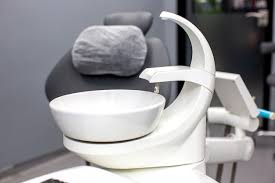In the world of healthcare and personal care, where dignity, safety, and comfort intersect, few innovations have made as profound an impact as the hygienstol. If you’ve ever wondered how to make bathroom routines safer and more independent for those with mobility challenges, hygienstolar (hygiene chairs) are the unsung heroes of modern caregiving. These specialized chairs aren’t just pieces of furniture—they’re thoughtfully engineered solutions designed to transform potentially stressful daily activities into manageable, empowering experiences.
Whether you’re a caregiver navigating the needs of an elderly loved one, a healthcare professional in a bustling clinic, or a parent supporting a child with developmental delays, understanding hygienstolar can open doors to better quality of life. In this comprehensive guide, we’ll dive deep into what hygienstolar are, their evolution, types, benefits, practical applications, selection tips, and maintenance essentials. By the end, you’ll see why these chairs are essential for fostering independence and reducing strain in care environments. Let’s explore!
What Are Hygienstolar? A Quick Primer
At its core, a hygienstol is a hygiene chair engineered for toileting, showering, and other personal care tasks. Originating from Scandinavian design principles—where functionality meets minimalism—these chairs prioritize ergonomics, adjustability, and hygiene. The term “hygienstolar” is Swedish for “hygiene chairs,” reflecting their strong roots in Nordic healthcare innovation, though similar products exist globally under names like shower chairs or commode chairs.
Unlike standard bathroom seats, hygienstolar are built to accommodate users with limited mobility, such as the elderly, individuals with disabilities, post-surgery patients, or children with special needs. They feature robust frames made from corrosion-resistant materials like aluminum or stainless steel, ensuring durability in wet environments. Many models include electric height adjustments, tilting mechanisms, and lockable wheels for seamless transfers between rooms. Certified to standards like ISO 17966:2016, these chairs aren’t just practical; they’re a testament to compassionate design that puts user safety first.
The rise of hygienstolar can be traced back to the early 2000s, when companies like GATE Rehab Development and Etac in Sweden began addressing the growing demands of an aging population. What started as basic commode aids has evolved into sophisticated systems that integrate technology for personalized care, reducing fall risks (a leading cause of injuries in bathrooms) and empowering users to maintain autonomy.
The Many Types of Hygienstolar: Finding the Perfect Fit
Hygienstolar come in a variety of configurations to suit diverse needs, from compact home models to heavy-duty institutional versions. Understanding the types helps in selecting one that aligns with specific lifestyles and requirements. Here’s a breakdown of the most common categories:
1. Standard Shower and Toilet Chairs
These are the workhorses of hygienstolar, ideal for everyday use in homes or care facilities. Models like the EASY™ from GATE feature adjustable heights (typically 50-93 cm) and tilting functions (up to 30° backward for easier entry/exit). They often include ergonomic seats with cutouts for hygiene access and lockable casters for mobility. Perfect for users up to 150 kg, these chairs emphasize simplicity and affordability, making them a go-to for first-time buyers.
2. High-Back and Soft-Back Variants
For those needing enhanced spinal support, high-back hygienstolar like the EASY™ HighBack provide integrated neck rests and spring-loaded lumbar cushions. These are especially beneficial for prolonged sitting during grooming routines. Soft-back options, with flexible PUR or fabric bands, adapt to the user’s back contour, minimizing pressure points and promoting better posture. They’re popular in rehabilitation settings where comfort during extended sessions is key.
3. Bariatric Models
Designed for larger users, bariatric hygienstolar such as the Amfibi XL boast wider seats (up to 67 cm between armrests) and higher weight capacities (250 kg+). With reinforced frames and wider bases for stability, these chairs address the unique challenges of plus-size caregiving, ensuring safety without compromising on maneuverability in tight bathroom spaces.
4. Pediatric and Junior Chairs
Tailored for children and teens with developmental delays or disabilities, these smaller-scale hygienstolar (e.g., R82 Flamingo High-Low from Etac) focus on growth adaptability. They include colorful, engaging designs to make hygiene fun, with adjustable components for activities like tooth-brushing or bathing. Features like splash guards and soft armrests prioritize sensory comfort, helping young users build confidence in self-care.
5. Mobile and Multi-Functional Chairs
For versatility, mobile hygienstolar with swivel seats and directional locks allow easy navigation from bedroom to bathroom. Multi-functional models double as examination chairs in clinics, blending hygiene with clinical utility. In dental or salon contexts, some variants emphasize antimicrobial surfaces for quick sanitization between clients.
Each type reflects a commitment to inclusivity, with options ranging from manual to electric-powered for varying budgets and tech preferences.
Key Features and Benefits: Why Hygienstolar Matter
What sets hygienstolar apart is their blend of innovative features and tangible benefits. Let’s unpack the standout elements:
- Ergonomic Design: Curved seats distribute weight evenly, reducing pressure sores and improving circulation. Tilt and height adjustments facilitate safe transfers, cutting caregiver lift injuries by up to 50%.
- Hygiene-Focused Materials: Non-porous, water-repellent surfaces (often with IP65+ ratings) resist bacteria and mold. Removable commode pans and machine-washable backs ensure effortless cleaning.
- Safety Enhancements: Lockable wheels, anti-slip feet, and harnesses prevent slips on wet floors. Armrests flip up for independent access, while footrests with heel straps support proper leg positioning.
The benefits extend far beyond specs. For users, hygienstolar restore dignity by enabling private routines without full assistance, boosting mental well-being. Caregivers experience less physical strain, leading to lower burnout rates and higher job satisfaction. In institutional settings, they streamline workflows, potentially saving hours weekly on transfers. Studies from Scandinavian health authorities highlight a 30-40% drop in bathroom-related accidents with regular use, underscoring their role in preventive care.
Moreover, in an era of infection control post-pandemic, hygienstolar’s antimicrobial properties minimize cross-contamination risks, making them indispensable in hospitals and nursing homes.
Real-World Applications: From Home to Healthcare Facilities
Hygienstolar shine in diverse scenarios. At home, a compact shower chair empowers an aging parent to shower independently, preserving their sense of control amid mobility loss. In pediatric care, as outlined by Etac’s resources, a junior model breaks down hygiene into structured steps—toileting, washing, grooming—fostering developmental milestones and family bonding.
Hospitals and clinics leverage bariatric or multi-functional types for efficient patient throughput. During rehabilitation, therapists use tilt features to encourage upright posture, aiding recovery from strokes or surgeries. Even in non-medical spaces like dental offices, ergonomic hygienstolar variants provide stable seating for procedures, enhancing patient comfort and procedural accuracy.
For children with special needs, integrating a hygienstol into daily routines isn’t just practical—it’s transformative. Checklists from brands like R82 help parents map activities, turning overwhelming tasks into achievable goals and promoting long-term independence.
How to Choose the Right Hygienstol: A Step-by-Step Guide
Selecting a hygienstol requires balancing user needs with practical constraints. Start by assessing the primary use: Is it for showering, toileting, or both? Measure the user’s height, weight, and space constraints—ensure the chair fits through doorways (most are 65-79 cm wide).
Key considerations include:
- Adjustability: Opt for electric models if frequent repositioning is needed.
- Accessories: Look for add-ons like side supports, pelvic belts, or splash guards for customization.
- Budget and Durability: Basic models start at $200-500, while advanced ones reach $1,500+. Prioritize corrosion-resistant builds for longevity.
- Certifications: Verify ISO compliance and weight ratings.
- User Feedback: Consult occupational therapists for personalized recommendations.
Test models if possible, or review user testimonials from sites like Euforia AB. For children, factor in growth potential with modular designs.
Maintenance Tips: Keeping Your Hygienstol in Top Shape
Proper upkeep ensures hygienstolar last 5-10 years with minimal issues. Daily: Wipe surfaces with mild, skin-safe disinfectants and warm water; avoid abrasives that could scratch coatings. Weekly: Inspect wheels, locks, and joints for wear—lubricate moving parts as needed. For fabric elements, machine-wash at 40°C.
Store in dry areas to prevent rust, and replace consumables like commode pans annually. In high-use settings, schedule professional servicing every six months. These habits not only extend lifespan but maintain hygiene standards, safeguarding users from infections.
Conclusion: Embracing Hygienstolar for a Brighter, Safer Tomorrow
Hygienstolar represent more than medical equipment—they’re bridges to independence, comfort, and joy in everyday life. From the ergonomic elegance of the EASY™ series to the robust support of bariatric designs, these chairs embody innovation driven by empathy. As populations age and healthcare evolves, investing in a hygienstol isn’t just practical; it’s a profound act of care.

